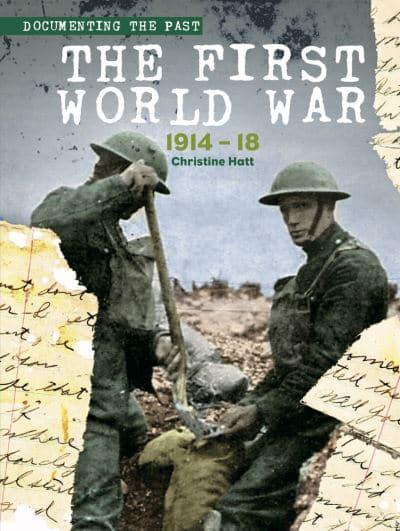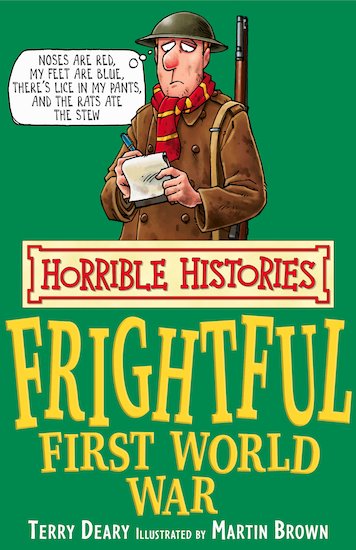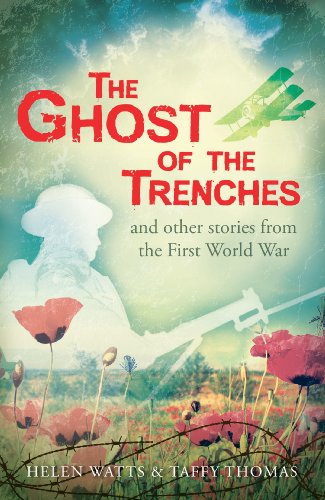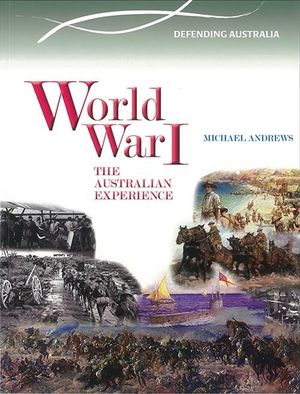


 Source: WWI National Museum and Memorial
Source: WWI National Museum and Memorial
World War I was largely defined by its trench warfare, a brutal military tactic that saw opposing forces bunkered down in dug out trenches in opposing lines with a short open field filled with barbed wire and open to enemy fire known as No Man's Land stretched between. Those fighting in the trenches faced terrible conditions, with knee high mud, constant shelling, gas bombs, and disease rampant throughout the trenches. Read through the resources below to learn more about this military style.
World War I was a war of trenches. After the early war of movement in the late summer of 1914, artillery and machine guns forced the armies on the Western Front to dig trenches to protect themselves. Fighting ground to a stalemate. Over the next four years, both sides would launch attacks against the enemy’s trench lines, attacks that resulted in horrific casualties. Read through this article to learn more.
Although there had been some trench warfare in the American Civil War of 1861 - 65, and the Russian-Japanese War of 1904 - 05, it wasn't until the First World War that fixed trench warfare became the standard form of fighting. The trench system along the Western Front ran for approximately 475 miles, in an "S" shape across Europe, from the North Sea to Switzerland. Read through this website to learn more about trench warfare.
On the Western Front, the war was fought by soldiers in trenches. Trenches were long, narrow ditches dug into the ground where soldiers lived. They were very muddy, uncomfortable and the toilets overflowed. Read through this website to learn mroe about life in the trenches, including videos and images.
Life in the trenches during the First World War took many forms, and varied widely from sector to sector and from front to front. Read through this website to learn more.
During trench warfare, opposing armies conduct battle, at a relatively close range, from a series of ditches dug into the ground. Trench warfare becomes necessary when two armies face a stalemate, with neither side able to advance and overtake the other. Although trench warfare has been employed since ancient times, it was used on an unprecedented scale on the Western Front during World War I. Read through this article to learn more.
This website has a great breakdown of how a trench looked and operated, with lots of diagrams and pictures.
Trench life involved long periods of boredom mixed with brief periods of terror. The threat of death kept soldiers constantly on edge, while poor living conditions and a lack of sleep wore away at their health and stamina. Click through the headings on this website to learn more about trench conditions.
After the German march on Paris was halted at the First Battle of the Marne, both sides dug in along a meandering line of fortified trenches stretching from the North Sea to the Swiss frontier with France. The Western Front settled into a battle of attrition, with a trench line that changed little until 1917. Read through this website to learn more.
One image above all dominates the memory of the war on theWestern Front — that of the trenches. For most of the war, after the initial more fluid battles of late 1914 and before the more open warfare that began in March 1918, the Allies and the Germans engaged in a long period of static war. From the North Sea off Belgium to the Swiss border, there stretched through Belgium and France major lines of defence which, at periodic intervals, each side would try to break through in the search for a decisive victory Read through this fact sheet to learn more.
For most people, the phrase ‘First World War’ conjures up images of deep, waterlogged trenches and mud-spattered soldiers. But what was trench life really like? In this episode, those who survived it describe their experiences. The trenches could be a shock to those who knew little about them in advance. Read through first hand accounts of trench warfare to learn more.
The Christmas Truce has become one of the most famous and mythologised events of the First World War. But what was the real story behind the truce? Why did it happen and did British and German soldiers really play football in no-man's land? Read through this article to learn more.


Trenches came into widespread use in 1914 as a way for soldiers to protect themselves against the firepower of modern weaponry. Over time, they developed into huge networks. As shown here, trenches were given names to help identify them. Sometimes these names related to familiar places from home.

Water and mud could be a problem in the trenches, particularly in the autumn and winter months. Wooden ‘duckboards’ were used to line the bottom of trenches and the sides were reinforced with sandbags.

Trench conditions varied across different fronts. In Gallipoli in Turkey, mud was less of a problem but rocky and mountainous terrain posed different challenges. Soldiers also suffered from the heat.

Hot food was not supplied to front line soldiers until late 1915 and even then it wasn't always a regular occurrence. Troops in the front line had a repetitive diet of tinned food, sometimes served cold.

This photograph shows an infantryman on sentry duty, whilst some of his comrades snatch a few moments of sleep behind him. They are in what was previously a German trench at Ovillers-la-Boisselle on the Somme, July 1916.

When able to rest, soldiers in front line trenches would try and shelter from the elements in dugouts. These varied from deep underground shelters to small hollows in the side of trenches – as shown here.

Most activity in front line trenches took place at night under cover of darkness. During daytime soldiers would try to get some rest, but were usually only able to sleep for a few hours at a time.

Soldiers in wet and muddy trenches were at risk from trench foot, caused by continually wearing tight, cold and wet boots. If untreated, trench foot could lead to gangrene, but it could be prevented by regular changes of socks and foot inspections – as shown here.

Life in the front line always carried an element of danger. The threat could be from snipers, shellfire or from taking part in a trench raid or a major offensive. This rare photograph shows the moment when the first men go over the top during a raid in spring 1917.

The terrible casualties sustained in open warfare meant that trench warfare was introduced very quickly. Trenches provided a very efficient way for soldiers to protect themselves against heavy firepower and within four months, soldiers on all fronts had begun digging trenches. This photograph shows French infantry manning a forward line of trenches in Lorraine during January 1915.

Although trenches protected soldiers in them they also led to a state of deadlock. Trench systems developed significantly over the course of the war. This photograph was taken in 1917 and shows a sentry from the Lancashire Fusiliers looking through a box periscope to observe No Man’s Land and avoid being seen himself.

Artillery bombardments were designed to destroy enemy guns, cut through dense barbed wire and blast men from the trenches. Often, however, they did not succeed in these objectives. On 24 June 1916 1500 British guns began a week long bombardment to smash German defences on the Somme before the infantry attacked. Many of the shells they fired, however, were duds and when the infantry advanced it soon became clear that the artillery bombardment had failed. German troops emerged and gunned down advancing British infantry, killing 20,000 on 1 July alone.

Tunnelling was used by both sides to try and dig beneath enemy trenches and lay large volumes of explosives. Tunnellers faced many dangers including the use of poison gas, hand-to-hand combat with enemy tunnellers and the threat of being buried alive. This image shows a mine exploding underneath the German front line positions at Hawthorn Redoubt. It was detonated 10 minutes before the first day of the Battle of the Somme, 1 July 1916. With 45,000 pounds of explosives, the mine caused a crater 130 feet across by 58 feet deep.

Trenches were introduced very quickly during the First World War. Trenches provided a very efficient way for soldiers to protect themselves against heavy firepower. Over time, they developed into elaborate systems like these trenches at Beaumont Hamel, photographed in 1916. Trench systems included different features, like support trenches and communication trenches, as well as the front line trenches themselves.

Trench systems weren’t confined to the Western Front and were established in a variety of different landscapes across different fronts. This photograph shows stretcher-bearers carrying an injured man down a narrow communication trench in Salonika. In this area of northern Greece, extremes of climate and the threat of disease led to more casualties than the fighting.

Twenty seven ms letters (63pp), May 1915 - April 1916, written to his parents whilst serving as a Private with 'A' Company, 20th Battalion Manchester Regiment (22nd Brigade, 7th Divison), together with two ms letters and one postcard (5pp), December 1915, written to two of his brothers and sister, describing training, conditions in the trenches, unfounded rumours of leave for his Company, refusing promotion, helping to dig mines under German trenches, Zeppelins raids over Britain and rumours of Turkish forces surrendering thereby bringing about an end to the war; two ms letters and one postcard (7pp), June 1916, from his parents including details on the introduction of conscription in Britain; one ms letter (4pp), 24 June 1916, from his brother Fred; one ms letter (2pp), 22 June 1916, from E J; one ms letter (2pp), 23 October 1915, from Bertha Hall; two postcards of bomb damage; two photographs of A Kirkman and W L Tweedale; a document listing personal effects returned to his parents after he died from wounds in July 1916; five field service postcards and various address cards. The collection also includes the New Testament, a Book of Psalms and Daily Readings from the Soldiers Christian Association, an Order of Service for the funeral of John Ward, a ts transcription (24pp) of the letters and a photograph showing Albert with his two brothers John and Norman, all in military uniform.

Hot food was not supplied to front line soldiers until late 1915, but even then kitchens could not always get close enough to provide a hot meal for all soldiers. Troops in the front line often endured a repetitive diet of cold tinned food. A unit would spend a few days in the front line, followed by periods in reserve and rest.


 Australians in the First World War by
Australians in the First World War by  Australians on the Western Front by
Australians on the Western Front by  The broken years : Australian soldiers in the Great War by
The broken years : Australian soldiers in the Great War by  Brothers at war : a first world war family history by
Brothers at war : a first world war family history by  The First World War 1914-18 by
The First World War 1914-18 by  First World War by
First World War by  Frightful first World War by
Frightful first World War by  Fromelles : Australia's bloodiest day at war by
Fromelles : Australia's bloodiest day at war by  The ghost of the trenches by
The ghost of the trenches by  Living through World War I by
Living through World War I by  My first world war by
My first world war by  World War I by
World War I by  World War I : the Australian experience by
World War I : the Australian experience by  Shadows from wire : poems and photographs of Australia in the Great War by
Shadows from wire : poems and photographs of Australia in the Great War by